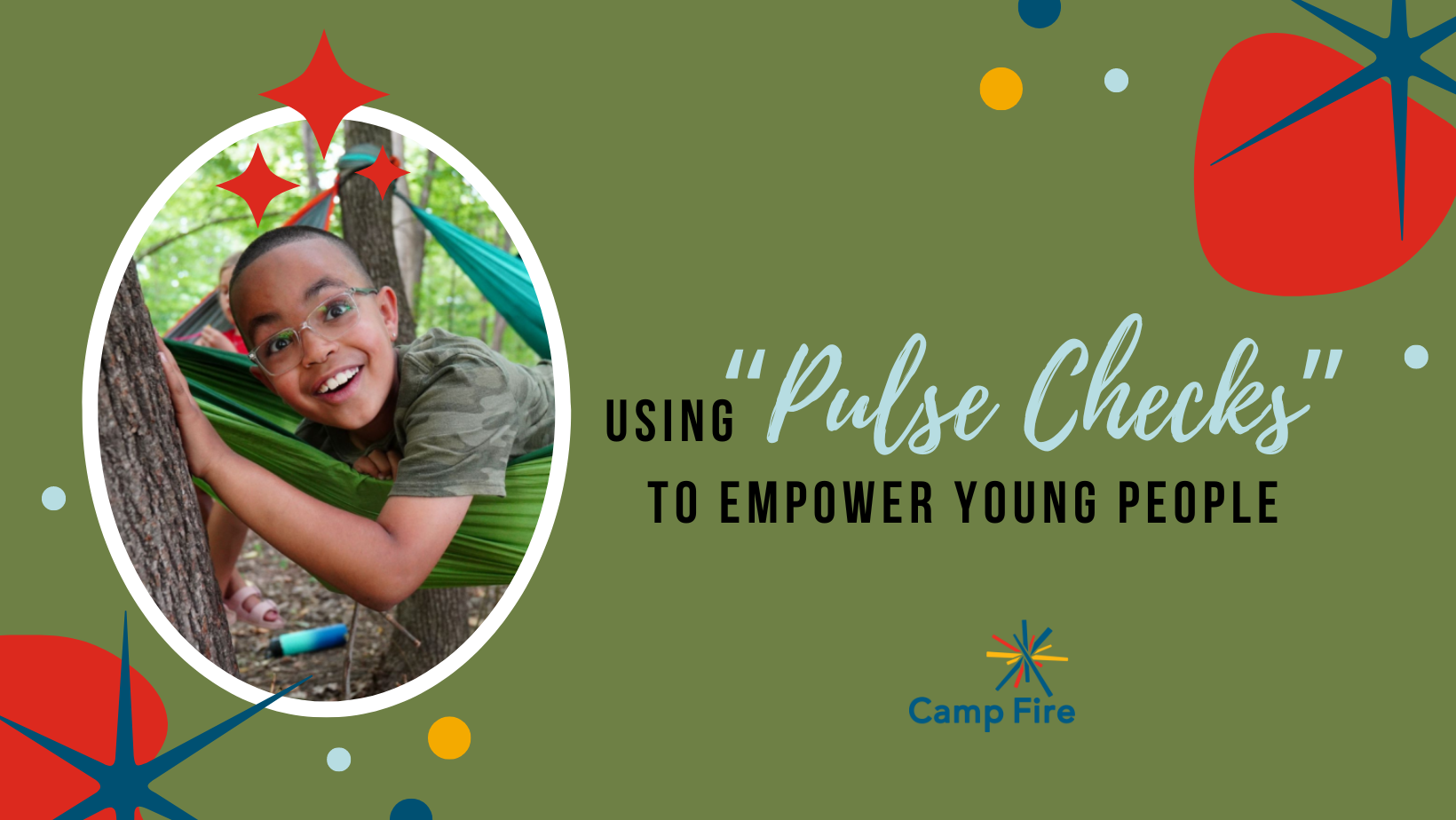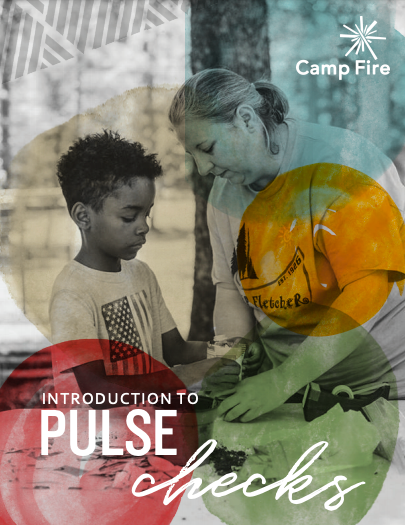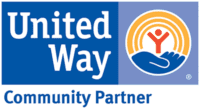This blog previously appeared on CampFire.org on September 13, 2021.

Want to make sure the young people in your life are heard, supported and empowered? It may be time for a Pulse Check. This Camp Fire tool was developed for our own programs, but you can put its principles to use at the dinner table, on the playing field, or during your next multigenerational vacation.
A Pulse Check is any regular, intentional practice that lets young people share what they are experiencing. In more formal environments, they could take the form of a survey (like the one we’re conducting below!). But in more informal settings, it could be as simple as posing a “Question of the Day” or doing a reflection exercise together every few months.
At Camp Fire, we use Pulse Checks to empower young people to share their thoughts and points of view and to continuously improve our programs. You can use Pulse Checks to share power with younger people in your family, deepen your mentoring relationships, or boost morale on a sports team you coach. Any time you’re interacting with kids or youth, a Pulse Check can help make sure their experiences are being centered.
And you get bonus points if you include young people in the design and execution of the Pulse Check — that’s really getting meta with youth voice, but we promise it works!
So, how do you do a Pulse Check?

Do a little pre-thinking. Ask yourself:
- What am I trying to learn?
- Who am I trying to learn from? What age range are you working with? Are there any accessibility issues I need to think about? How will I make sure everyone’s voice is heard?
- How can I involve the young people I’m trying to learn from in this process? Let both the young people you’re working with and your fellow adults know what you’re trying to learn. Design the Pulse Check collaboratively.
- How often will we do Pulse Checks? Consistency is key!

Let the group decide how they want to conduct the Pulse Check. Here are some methods we use at Camp Fire (but you can also make up your own!)
- Dot Voting: This is a quick, transparent way to get a read on how a group is feeling. Pose your question on a big sheet of poster board with various options for answers (Always/Never/Sometimes, various emotion emojis, Agree/Neutral/Disagree, etc) underneath. Give every participant dot stickers to vote on the answer that fits them the most.
- Exit Poll: Good for practices or any regular group meeting, an exit poll is a fast way to get feedback. Pose a question and mark containers (like jars or bowls) with answers (Always/Never/Sometimes, various emotion emojis, Agree/Neutral/Disagree, etc). Give each participant an “exit ticket” like a marble or a sheet of paper. As participants leave, they drop their “ticket” in the container that fits their feelings the most.
- Listening Session: Settle in for some good talk time: Have three to six open-ended and non-leading questions ready along with big sheets of paper for note-taking. Have snacks and fidget toys on hand and set expectations for communicating kindly and respectfully. Pose your questions and either have an appointed note-taker or let participants add to the notes collaboratively.
- Word Web: This free-form method can take you down some really interesting paths. Get some big sheets of paper and colorful markers. Write your main topic at the top of the paper and have the group free-associate words, colors and pictures stemming out from the original word or phrase. Share the connections and new ideas that you discovered from the web.
-
-

As you’re narrowing down on what you specifically want to learn from your Pulse Check, it helps to integrate in the goals and/or values of your group, team, family or program. Brainstorm questions that would help you learn if you are making progress toward your goals or living out your values.
- At Camp Fire, we are trying to create six specific core experiences for young people, so we design Pulse Check questions around those. For example, one of our core experiences is “Adults Who Prioritize Youth.” Some Pulse Check questions we might ask are: “Do you feel adults in Camp Fire care about you?” “At Camp Fire, do you get to solve problems in a variety of ways without adults telling you what to do?” or “Do Camp Fire staff really listen to what you have to say?”
- Craft your questions so they get to the heart of what matters most to you and the young people you are working with.
-

- Share your findings. Depending on your method, the results may be obvious (everyone can see a word web, for example) or need some clarification (sharing exit poll results from the last sessions). Make sure everyone has the same information from the Pulse Check.
- Use what you learned in your next Pulse Check. Keep going, keep listening, keep sharing, keep growing! Keep centering youth voices!
Know a young person currently involved in Camp Fire? We want to hear from them! Please ask them to fill out this short Youth Voice and Leadership Opportunities survey.
Want more details on how to conduct a really stellar Pulse Check? See Camp Fire’s official toolkit here for all the nitty gritty.







